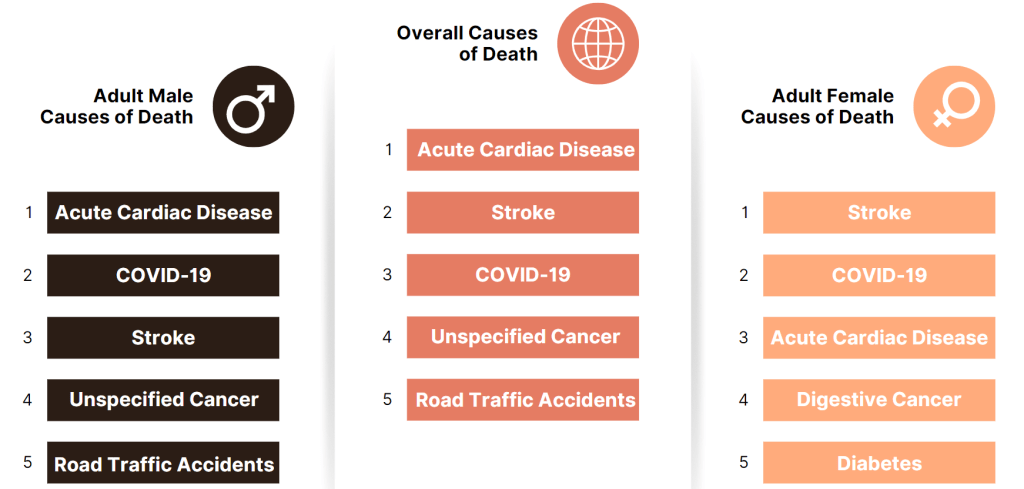North West Syria
Project Details
Background
Approach
- Location: Syria, North West
- Length: 8 months
- Total Interviews: 600
- Staff: 3 Supervisors & 20 Community Health Workers
- Lack of Comprehensive Mortality Surveillance: NW Syria lacks a system providing specific mortality rates and cause-of-death (COD) data, hindering effective public health policy.
- Critical Need for Reliable Statistics: Accurate COD data are essential for setting health policies and tracking progress toward national and global health objectives, like the SDGs.
- MDC’s System: Our approach offered a reliable and cost-effective method for collecting untracked COD data.
- Project Timeline: Implemented over 8 months, from August 17 to April 18, 2023, the project aimed to enhance death registration within the region.
- Integral Part of Broader Strategy: This project is a segment of a comprehensive strategy to enhance the death registration process, establishing a robust Civil Registration and Vital Statistics (CRVS) system in Northwest Syria, which was absent.
- Preliminary Step Towards Integration: The initial phases set the groundwork for the demonstration phase, aiming to integrate this system with the CRVS, a significant step towards institutionalizing the process within Northwest Syria.
Results

Community vs. Hospital Deaths
Community deaths show an older age distribution compared to hospital deaths. Likely reasons attributed to the dominance of acute cases in hospitals, leading to younger deaths in these settings.
Key Findings
Sex Ratio of Age - Specific Mortality Rates
Men tend to have higher death rates at most ages. Exceptions are observed in regions with high maternal mortality rates and in societies where women and girls have lower social status.
Under-5 Age Distribution
Under-five deaths occur at a higher percentage between 28 days to less than 1 year compared to national statistics.
Child vs. Adult Mortality Patterns
Higher proportion of child deaths caused by Infectious and parasitic diseases compared to adults. Non-communicable diseases contribute to some child mortality but are more prominent in adult deaths. Generally, slightly more deaths from injuries occur in children than in adults.
Age-Sex Distribution Trends
Death percentage increases with age, particularly among the elderly. Infants show higher death rates compared to other age groups. Men exhibit a younger age distribution of death in contrast to women.

